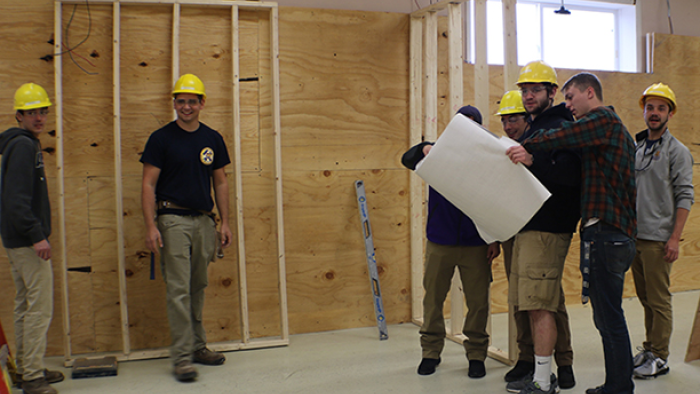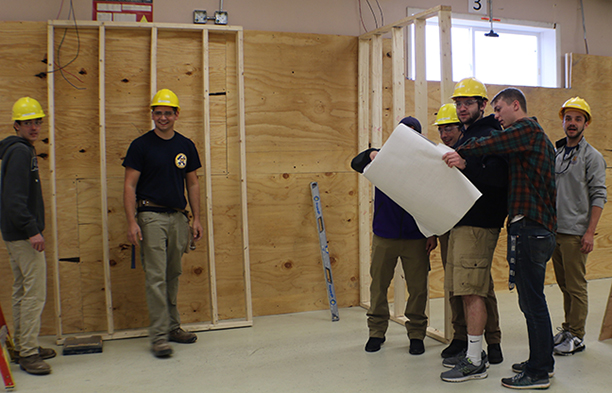
At a glance
 The intended partnership between the two schools would involve Alfred State students constructing the majority of the house, Finley said, while AU students implement the engineering design aspects.
The intended partnership between the two schools would involve Alfred State students constructing the majority of the house, Finley said, while AU students implement the engineering design aspects.

Alfred University third-year engineering student Matthew Finley has some big plans for a tiny house project, one that would involve partnering with Alfred State building trades students to see it come to fruition.
As part of their senior design project, Finley and 11 other engineering students at Alfred University have come up with a prototype design for the construction of a tiny house –a modern, energy-efficient structure generally occupying less than 500 square feet of floor space. Emphasizing a focus on green energy, some key features of the house include a solar array and battery bank system, a composting toilet, a rainwater collection and filtration system, and a garden affixed to the exterior. The home would be built on a special trailer chassis for mobility.
Having been aware of the partnership between the two colleges on the most recent Solar Decathlon home, the group of engineering students sought assistance from Alfred State students with the physical construction of the tiny house.
“Alfred State did such a great job on the Solar Decathlon house that it prompted us to reach out,” Finley said. “We also feel that building a tiny house is a unique opportunity for the students, as it is a chance to build in a new and exciting house market.”
Speaking to the real-world experience that Pioneers receive, Jack Jones, chair of Alfred State’s Building Trades Department, noted that Alfred State's building trades students construct a site-built house each year as part of their regular curriculum.

a project involving the construction of a tiny house.
“If the tiny house project receives the necessary funding and a practical timeline can be established, the project will be a good supplement for our students' education,” Jones said. “These homes are getting a lot of attention right now. If built, this house will give our students a great opportunity to see how important it is to design and build for efficient use of space.”
The intended partnership between the two schools would involve Alfred State students constructing the majority of the house, Finley said, while AU students implement the engineering design aspects. So far, Finley said, AU students have designed the house and written the bulk of the proposal.
“A lot of research has been done in the way of materials, logistics, sizing different engineering aspects, and finding funding,” he said. “We have also done a lot of work in figuring out the process by which the house will be built, including what exact materials are needed and how they will go together.”
Finley had originally conceived the idea for the tiny house during his freshman year when he began thinking about living “off the grid.”
“I was attracted to the minimalistic eco-friendly concept,” he said. “However, this took a back seat as schoolwork intensified. Later toward the end of my sophomore year, I started to revisit the concept, and had thoughts of building an off-grid tiny house. I had mentioned it to some of my fellow students and friends who all thought the idea was awesome.”
Finley hopes to have his design come to fruition as a construction project for Alfred State students by the beginning of the fall 2017 semester, and to be completed by the end of the next school year. He said he is thrilled about the possibility of the two colleges working together.
“I think that both student bodies carry brilliant talents and skills into this project,” he said. “Bringing this to the table as a partnership will yield something special.”
